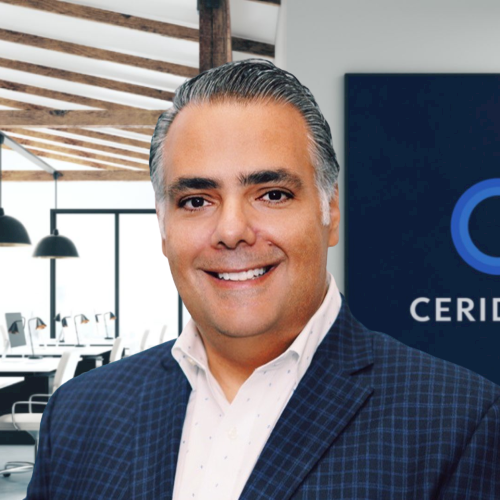The Silver Tsunami is rolling in. How is your healthcare organization preparing?
Baby boomers in the healthcare sector are retiring in large cohorts. If organizations don’t refocus their efforts on retaining their expertise, the skills gap will only widen. How will younger generations of talent handle increasing demand as the aging workforce retires?

Table of Contents
By 2030, all baby boomers in the United States will be 65 years old or over and it’s creating a double strain on the healthcare sector. Baby boomers are rapidly retiring from healthcare roles – taking decades of accumulated skill and knowledge with them – a phenomenon referred to as the “Silver Tsunami”. Yet, at the exact same time, they’re reaching an age where they need greater care, putting further strain on the system.
This loss of experience and knowledge has not received the attention it requires. Organizations have been focused on hiring new workers instead of bridging the gap of skills lost from retiring workers. It’s imperative for healthcare organizations, from solo practitioners to large practices, hospitals, health systems, and insurance companies, to work towards retaining the expertise of older, more experienced workers.
Here’s how healthcare organizations can better prepare for the mass departure of experienced and skilled workers from the workforce and mitigate challenges.
1. Leverage succession planning
As older, more experienced healthcare workers from the baby boomer generation move into retirement, healthcare organizations should think proactively about who will fill these roles. The skills gap within the industry is only speeding up, and hiring with the goal of filling current gaps – such as management positions – won’t be a sustainable strategy to deliver quality patient care.
Instead of looking outside the organization to fill open roles, employers can focus their efforts on developing talent in house by leveraging talent management platforms that provide a structure for succession planning. Creating development paths for workers and preparing them to transition into key positions, such as management and leadership, will support business continuity, helping to close the gap left behind by retirees.
Providing internal mobility opportunities can also be a valuable retention strategy. In Ceridian’s 2023 Pulse of Talent survey of 8,800 global workers, 84% of respondents said having a clear career path made them want to stay longer with their current employer. The healthcare industry should consider succession planning as key part of their talent retention strategy.
2. Make learning collaborative
Tenured practitioners have accumulated years of experience in the industry, from quickly identifying potential complications to communicating effectively with patients and their families. They also have years of practical institutional knowledge.
Experienced people managers know how to assign the right practitioner with the right skills to the right patient or assignment. They also know how to lead a team of healthcare professionals such as admins, assistants, and technicians to deliver excellent patient care. Organizations must work harder to retain knowledge and create opportunities for newer generations of workers to learn faster and more efficiently.
Younger generations of healthcare workers are seeking more collaborative learning models, which means organizations will need to make training programs less structured and more interactive — something that helps workers retain information and makes training more enjoyable. One example is using social learning platforms, which can help empower workers to drive their own development in an informal manner. This informal approach helps go beyond traditional methods in which doctors and their residents can create and share content with colleagues, such as cases, notes, and more.
For older workers, these platforms can also enable them to share their expertise in a fast and easy way via a forum or discussion board. Experienced workers or experts can answer questions on Q&A forums and share their expertise with the larger team. This active learning also allows healthcare organizations to assign coaching roles to subject matter experts to help educate and mentor other employees.
Organizations can also implement mentorship programs where tenured practitioners can share knowledge about the organization, the industry, patient care practices, and leadership capabilities with less-experienced practitioners and new graduates.
Related: Beyond the buzzwords: The internal mobility talent strategy
3. Engage workers after retirement
Once workers retire, they’re taking their years of accumulated knowledge and skills with them, and the door is often shut after they’ve left the workforce. Leading healthcare organizations are preparing for the imminent Silver Tsunami and implementing creative ways to keep top talent engaged post-retirement.
These organizations have programs that encourage recent retirees to stay connected to the company for the first couple years of retirement. This can include formal training sessions where workers can come in to share their experience, or simply an open line of communication for retirees to answer questions or provide career advice.
4. Document knowledge in a central system
In the healthcare sector, exchanges of information and knowledge are critical to patient management. Organizations will need to invest in tools that make the process of documenting and sharing business-critical knowledge part of the everyday work experience. Collective knowledge, such as where resources are located, needs to be centralized and updated so team members have ongoing access. Further, mobile access to information such as safety procedures will help practitioners quickly find the information they need in a moment’s notice – an imperative during workers’ busy shifts.
5. Leverage online learning to easily track requirements
Healthcare workers require a number of different certifications and licenses depending on their specific role. Employees of all ages need the correct licenses and up-to-date credentials to be able to work without being slowed down by the renewal process.
With learning tools that are built into everyday work, employees can easily see the most relevant learning paths and track their course progress in the same place where they manage the rest of their HR functions. Managers can also easily track mandatory requirements and receive certification expiration alerts to ensure their people are properly adhering.
Training and development initiatives will be crucial for healthcare providers tackling the mass exodus of baby boomers. Leaders in our industry recognize the importance of equipping their people to address the Silver Tsunami and its effects on workforce turnover. Healthcare providers will need to focus their efforts on learning and development strategies that support knowledge sharing between generations of talent to ultimately prepare their workforce for this transformative demographic shift.
Learn how to build a next-gen workforce for the future of healthcare
You may also like:
Ready to get started?


